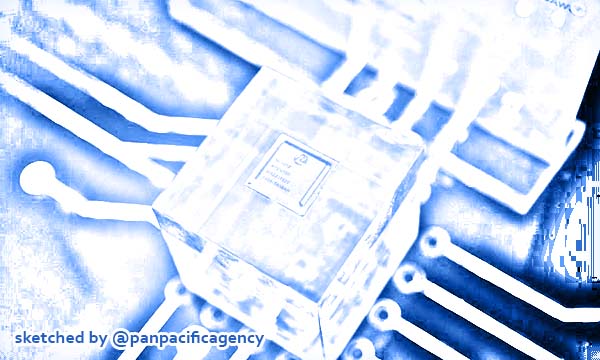[Analytics] Intel is making a mockery of reshoring

A chip from Huawei subsidiary HiSilicon on display earlier this year. New research shows the Chinese firm closing the gap with US suppliers. Photo: ImagineChina. Sketched by the Pan Pacific Agency.
Intel’s chief executive Bob Swan yesterday told industry analysts that the former industry leader in chip manufacturing might quit the fabrication business altogether, outsourcing its designs to Taiwan or South Korea instead. David P Goldman specially for the Asia Times.
The company’s shock announcement called into question US efforts to return critical manufacturing capacity to the United States, and came despite semiconductor industry lobbying to secure federal subsidies for chip production in the United States. Semiconductors are the building blocks of the digital economy, and America’s inability to slow the decline of onshore chip fabrication is a strategic liability of the highest order.
Swan’s demurral followed the announcement that Intel’s efforts to produce state-of-the-art 7-nanometer chips had hit a delay of one to two years. By that time Taiwan Semiconductor and Samsung will be fabricating 5-nanometer chips, with much higher transistor density and lower energy use. Intel’s 10-nanometer technology has just come into production, three years after target, and is already obsolete. Once the industry leader, Intel lacks the engineering expertise to stay ahead of Asian competition.
Intel’s share price crashed by 17% after Swan’s warning that Intel may “need to use somebody else’s process technology.” Texas Instruments invented the integrated circuit in 1958 and Intel became the world’s largest chip manufacturer in 1992. But fabrication of chips has migrated to Asia, especially Taiwan, and the US share of semiconductor production fell to just 12% last year, according to the Semiconductor Industry Association.
Two days before Swan’s announcement, the US House of Representatives passed an amendment to the National Defense Authorization Act providing federal subsidies for semiconductor manufacturing, with the support of a bipartisan group of congressmen. In a July 21 announcement, the Semiconductor Industry Association declared that “Congress has a strategic opportunity to strengthen U.S. semiconductor manufacturing and research, two crucial drivers of America’s economic strength, national security, and supply chain resilience. Today’s votes are important steps in the right direction and show there is broad, bipartisan support in Congress for bold semiconductor manufacturing incentives and research investments.”
Evidently that failed to impress Intel, which weighed the R&D costs of success in the next generation of chip production against the likelihood of a US government subsidy, and decided that outsourcing was the path of least resistance.
“Reshoring” American industry has drawn growing support since the Covid-19 epidemic exposed the vulnerability of US supply chains, and a number of Washington think tanks have weighed in with proposals, including one by American Compass, to which I contributed. Semiconductors are the top priority for restoring onshore production, in part because undetectable “back doors” can be placed among the billions of transistors in a thumbnail-sized chip. As I report in my book You Will Be Assimilated: China’s Plan to Sino-Form the World, computer security requires domestic production with appropriate security precaution.
Silicon is to military powers of the 21st century what steel was to the militaries of the 19th century. Smart weapons depend on secure chips, and a country that cannot make its own semiconductors would be like a 19th-century power that couldn’t cast its own cannon. “Reshoring” is meaningless unless it includes silicon.
The engineering requirements of modern chip production are daunting, and the stakes are high. Taiwan Semiconductor Manufacturing Corporation, the world’s leading chip foundry, spent more than $20 billion on its present state-of-the-art fabrication facilities. At the present rate of innovation, a new foundry will be obsolete within five years, so commercial success depends on speedy completion and low error rates. The chip production process involves 10 major procedures, each of which requires dozens of specialized engineering solutions.
There isn’t much room for failure given the engineering challenges to produce chips with impossibly small tolerances, and the galloping depreciation rate of new production facilities. Taiwan and South Korea have made the investments in physical and human capital to succeed in this enterprise, with considerable subsidies from their respective governments. China is engaged in a crash program to build its domestic production facilities, and reportedly has hired between 10% and 20% of Taiwan’s production engineers to work on the Mainland.
Intel, America’s aging national champion in the field, doesn’t have the ambition to compete against the Asians – even though the US Congress appears favorably disposed to provide subsidies for domestic chip production.